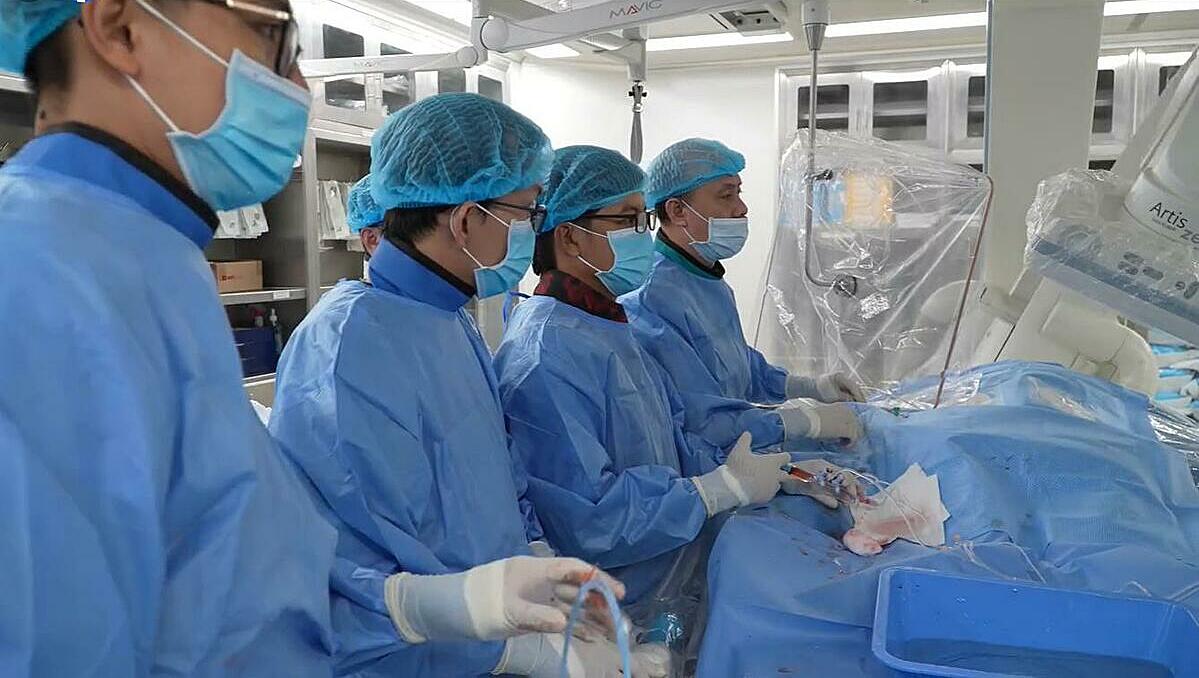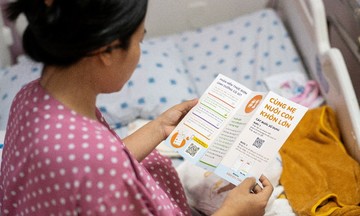On 6/8, Dr. Huynh Trung Cang, head of the cardiology department at Kien Giang General Hospital, reported on a patient who experienced two cardiac arrests. The 54-year-old man, a smoker with hypertension, initially suffered chest pain and cardiac arrest. He was successfully resuscitated at a local hospital and transferred to Kien Giang General Hospital for specialized care. A coronary angiography revealed moderate narrowing in three branches but no blood clots. After 4 days of medical treatment, his condition improved, and he was discharged.
A month later, the patient returned with chest pain, dizziness, loss of consciousness, and urinary incontinence. He suffered a second cardiac arrest but was again resuscitated and admitted to the intensive care unit. During the night, he experienced severe chest pain and a rapid drop in blood pressure due to a blockage in a critical coronary artery, causing a serious arrhythmia. A defibrillator was implanted to prevent further cardiac arrest.
An optical coherence tomography (OCT) scan revealed a high-risk, rupture-prone plaque in his coronary artery, causing spasms, acute myocardial infarction, and dangerous ventricular arrhythmia that could lead to sudden death. Kien Giang General Hospital is the only facility in the Mekong Delta region to offer this advanced imaging technique, having performed it in over 250 complex cases.
"The situation was complex due to the patient's multiple cardiac arrests, the location and complexity of the arterial damage, the presence of spasms, and the tortuous anatomy of the coronary arteries," Dr. Cang said.
This necessitated a bioadaptive stent to maintain long-term coronary artery function and restore physiological movement after the procedure. The team chose the DynamX Bioadaptor stent to minimize distortion in small, twisted, or spasm-prone vessels.
 |
Doctors perform a cardiac intervention on the patient. Photo: *Hospital* |
Following the procedure, the artery's dilation reached 96%, with no dissection observed. The patient recovered well and was discharged after a week. He has remained symptom-free for three months.
Out-of-hospital cardiac arrest is extremely critical, with a high mortality risk if not treated promptly and correctly. Over 65% of cases are caused by cardiovascular disease. Dr. Cang attributed the patient's survival to the successful resuscitation efforts at the initial hospital, prompt emergency care, and the specialized treatment by the cardiology and interventional cardiology teams. However, he emphasized that not everyone is as fortunate.
Dr. Cang urged public awareness of coronary artery disease as a leading cause of death. It often progresses silently but can abruptly cause arrhythmia and cardiac arrest. Among out-of-hospital cardiac arrests, 56% are caused by arrhythmia stemming from coronary artery disease. Individuals with risk factors such as hypertension, diabetes, smoking, dyslipidemia, obesity, or a family history of early-onset heart disease should undergo regular checkups, even without symptoms.
People should also recognize early warning signs: shortness of breath during exertion, chest pain lasting over 5 minutes during exertion, and palpitations during exertion. Symptoms of a suspected heart attack, such as severe chest pain, shortness of breath, sweating, and a drop in blood pressure, warrant an immediate call to emergency services (115) or a visit to the nearest hospital. If someone is unconscious, not breathing, and has no pulse, CPR should be administered if the rescuer is trained, while simultaneously calling for emergency assistance and getting the person to a location with a defibrillator as quickly as possible.
"Every minute of delay reduces the patient's chance of survival," Dr. Cang stressed.
Le Phuong












